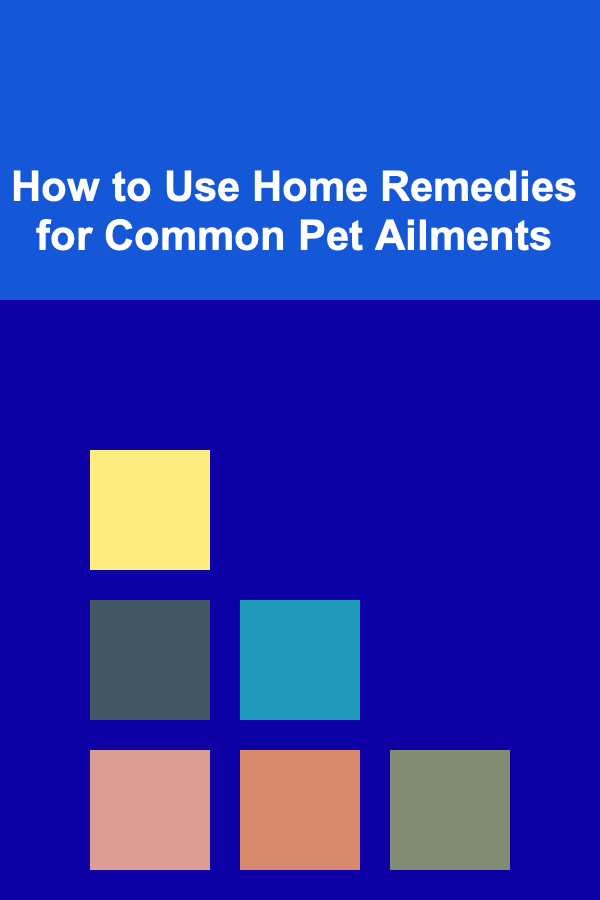
How to Use Natural Cleaning Products for a Safe Home Environment
ebook include PDF & Audio bundle (Micro Guide)
$12.99$11.99
Limited Time Offer! Order within the next:

Maintaining a clean and safe home environment is essential for your health and well-being. However, many conventional cleaning products on the market today are filled with toxic chemicals that can harm both the environment and your health. From respiratory issues to skin irritation, prolonged exposure to these chemicals can have serious consequences.
Natural cleaning products offer a safer, eco-friendly alternative to traditional cleaners. These products harness the power of natural ingredients like vinegar, baking soda, essential oils, and plant-based surfactants to get your home sparkling clean without the harmful side effects.
This guide will explore the benefits of natural cleaning products and provide actionable tips on how to use them effectively for a safer home.
Why Choose Natural Cleaning Products?
1. Healthier for Your Family
Conventional cleaning products often contain harsh chemicals such as ammonia, bleach, and phthalates, which can cause a range of health problems. These include headaches, dizziness, allergic reactions, and long-term respiratory issues. For those with sensitivities, these products can exacerbate conditions like asthma or eczema. Natural cleaners, on the other hand, use non-toxic, plant-based ingredients that are gentle on your health and skin.
2. Environmentally Friendly
Many commercial cleaning products contribute to water and air pollution due to their chemical compositions. When these chemicals are washed down the drain, they end up in rivers and oceans, affecting wildlife and ecosystems. Natural cleaning products are biodegradable, which means they break down naturally without leaving harmful residues. Additionally, many of these products come in recyclable packaging, further reducing their environmental impact.
3. Cost-Effective
Natural cleaning products are often more affordable than their commercial counterparts. Many of the ingredients used in DIY natural cleaners, such as vinegar and baking soda, are inexpensive and can be bought in bulk. Plus, many natural cleaners can be made at home, eliminating the need for purchasing new bottles of cleaners regularly.
4. Effective Cleaning Power
Just because natural cleaners are made from simple ingredients doesn't mean they aren't effective. In fact, many natural products have been used for centuries for their cleaning properties. For instance, vinegar is a natural disinfectant, while baking soda works as an abrasive cleaner. When combined with essential oils like tea tree or lavender, natural cleaners can effectively tackle everything from grease to mold.
Key Ingredients in Natural Cleaning Products
Before diving into how to use natural cleaners, it's essential to understand the ingredients commonly used in these products and their specific cleaning properties:
1. Vinegar
Vinegar is a versatile natural cleaner with mild acidic properties. It effectively dissolves mineral deposits, cuts through grease, and acts as a deodorizer. It's ideal for cleaning glass, countertops, and bathroom surfaces. White distilled vinegar is commonly used in natural cleaning recipes due to its neutrality and effectiveness.
2. Baking Soda
Baking soda (sodium bicarbonate) is a natural abrasive and deodorizer. It can scrub surfaces without scratching and works well for removing stains and odors. It's commonly used in kitchens and bathrooms to clean surfaces, freshen carpets, and remove tough stains.
3. Castile Soap
Castile soap is a gentle, plant-based soap made from olive oil. It's biodegradable, non-toxic, and can be used to clean a variety of surfaces. It's especially useful in DIY cleaning recipes, acting as the base for floor cleaners, hand soaps, and dishwashing liquid.
4. Essential Oils
Essential oils like tea tree, lavender, eucalyptus, and lemon are not only aromatic but also have natural antibacterial, antiviral, and antifungal properties. They are commonly added to natural cleaning solutions for both their cleaning power and pleasant scents.
5. Lemon Juice
Lemon juice is a natural acidic cleaner that can tackle stains, cut through grease, and remove odors. Its high acidity makes it an excellent choice for disinfecting surfaces, while its fresh scent leaves a natural, uplifting fragrance.
6. Hydrogen Peroxide
Hydrogen peroxide is an effective disinfectant that kills bacteria, mold, and viruses. It's often used for cleaning bathrooms, kitchens, and other areas where germs are a concern. When used in diluted concentrations, it's safe for most surfaces and provides a strong, eco-friendly cleaning alternative.
How to Use Natural Cleaning Products for a Safe Home
Now that you know the key ingredients, let's dive into practical ways to incorporate natural cleaning products into your routine.
1. All-Purpose Cleaner
Creating an all-purpose cleaner with natural ingredients is straightforward and effective. Here's a simple recipe to get you started:
Ingredients:
- 1 cup white distilled vinegar
- 1 cup water
- 1 teaspoon baking soda
- 10--20 drops of essential oils (e.g., lavender or lemon)
Instructions:
- In a spray bottle, combine the vinegar and water.
- Slowly add the baking soda (it will fizz).
- Add the essential oils for fragrance and added antibacterial properties.
- Shake the bottle gently to mix the ingredients.
This mixture can be used to clean countertops, sinks, and even glass. The vinegar disinfects, the baking soda scrubs, and the essential oils provide a pleasant scent while enhancing cleaning power.
2. Floor Cleaner
For a natural floor cleaner that works on tile, hardwood, and laminate, try this simple recipe:
Ingredients:
- 1 gallon of warm water
- 1/4 cup Castile soap
- 10--15 drops of essential oils (optional for fragrance)
Instructions:
- In a bucket, mix the warm water and Castile soap.
- Add your essential oils if you want a specific scent.
- Use a mop to clean your floors as usual.
This cleaner is effective for most floor types and leaves your floors streak-free and smelling fresh.
3. Glass Cleaner
To clean windows and mirrors without streaks, try a DIY glass cleaner using vinegar and water.
Ingredients:
- 1 cup distilled white vinegar
- 1 cup water
- A few drops of essential oil (optional for fragrance)
Instructions:
- Mix the vinegar and water in a spray bottle.
- Add essential oils if you prefer a scented cleaner.
- Spray on glass surfaces and wipe with a microfiber cloth for a streak-free shine.
4. Bathroom Cleaner
To tackle soap scum, mold, and mildew, create a bathroom cleaner with baking soda and vinegar:
Ingredients:
- 1/2 cup baking soda
- 1/2 cup white vinegar
- 10--15 drops of tea tree or lavender essential oil (optional)
Instructions:
- Sprinkle baking soda directly on bathroom surfaces like sinks and tubs.
- Spray with vinegar and let it fizz for a few minutes.
- Scrub the area with a sponge or brush, and rinse with water.
This combination of baking soda and vinegar breaks down grime and kills mold and bacteria, making it perfect for bathroom cleaning.
5. Carpet Freshener
For a natural way to freshen up your carpets, use baking soda and essential oils.
Ingredients:
- 1 cup baking soda
- 10--20 drops of essential oil (lavender, lemon, or eucalyptus)
Instructions:
- Mix the baking soda and essential oil in a bowl.
- Sprinkle the mixture over your carpets.
- Let it sit for 15--30 minutes to absorb odors.
- Vacuum thoroughly.
This method removes odors and leaves your carpet smelling fresh without the need for harsh chemical deodorizers.
6. Disinfecting Cleaner
Hydrogen peroxide can be used as an effective disinfectant for high-touch surfaces, such as doorknobs, light switches, and countertops.
Ingredients:
- 3% hydrogen peroxide (standard store-bought concentration)
- Water (optional for dilution)
Instructions:
- Pour hydrogen peroxide into a spray bottle (you can dilute it with water if you prefer).
- Spray on surfaces and allow it to sit for 5--10 minutes to disinfect.
- Wipe with a clean cloth.
Hydrogen peroxide is particularly effective against viruses and bacteria, making it a great option for disinfecting in the kitchen and bathroom.
Tips for Safe Usage
- Ventilation: Even natural cleaners can release fumes, so ensure good ventilation in your home when cleaning.
- Test Surfaces: Before using a new cleaner on a surface, test it in a small inconspicuous area to ensure it doesn't cause damage.
- Storage: Store your natural cleaning products in labeled containers away from children and pets.
- Clean Regularly: The key to a safe home environment is consistency. Regular cleaning with natural products helps to prevent the buildup of dirt, bacteria, and allergens.
Conclusion
Using natural cleaning products is a simple and effective way to create a safer, healthier home environment. With the right ingredients and recipes, you can tackle virtually every cleaning task in your home without relying on harmful chemicals. Not only will you protect your family's health, but you'll also contribute to a cleaner, more sustainable planet. So, make the switch to natural cleaning today and enjoy a fresh, toxin-free home!

A Guide to Utilizing Public Parks and Recreational Areas for Free Outdoor Fun
Read More
How to Create a Meal Prep Challenge for Motivation
Read More
How to Create a Portable Fishing Kit for Emergencies
Read More
How to Use Fabrics and Textiles to Change a Room's Vibe
Read More
How to Use Furniture with Built-In Storage Wisely
Read More
How to Use Home Remedies for Common Pet Ailments
Read MoreOther Products

A Guide to Utilizing Public Parks and Recreational Areas for Free Outdoor Fun
Read More
How to Create a Meal Prep Challenge for Motivation
Read More
How to Create a Portable Fishing Kit for Emergencies
Read More
How to Use Fabrics and Textiles to Change a Room's Vibe
Read More
How to Use Furniture with Built-In Storage Wisely
Read More